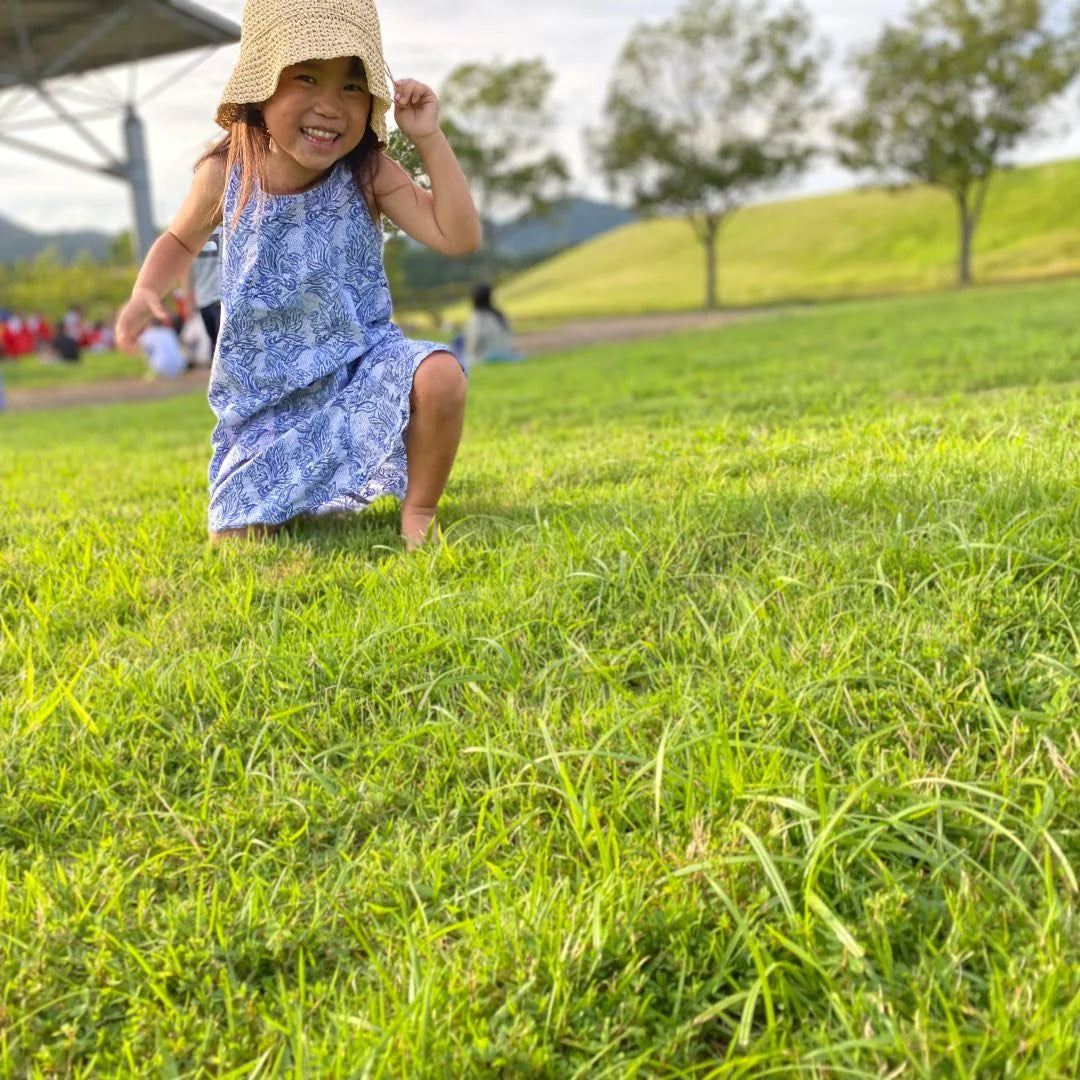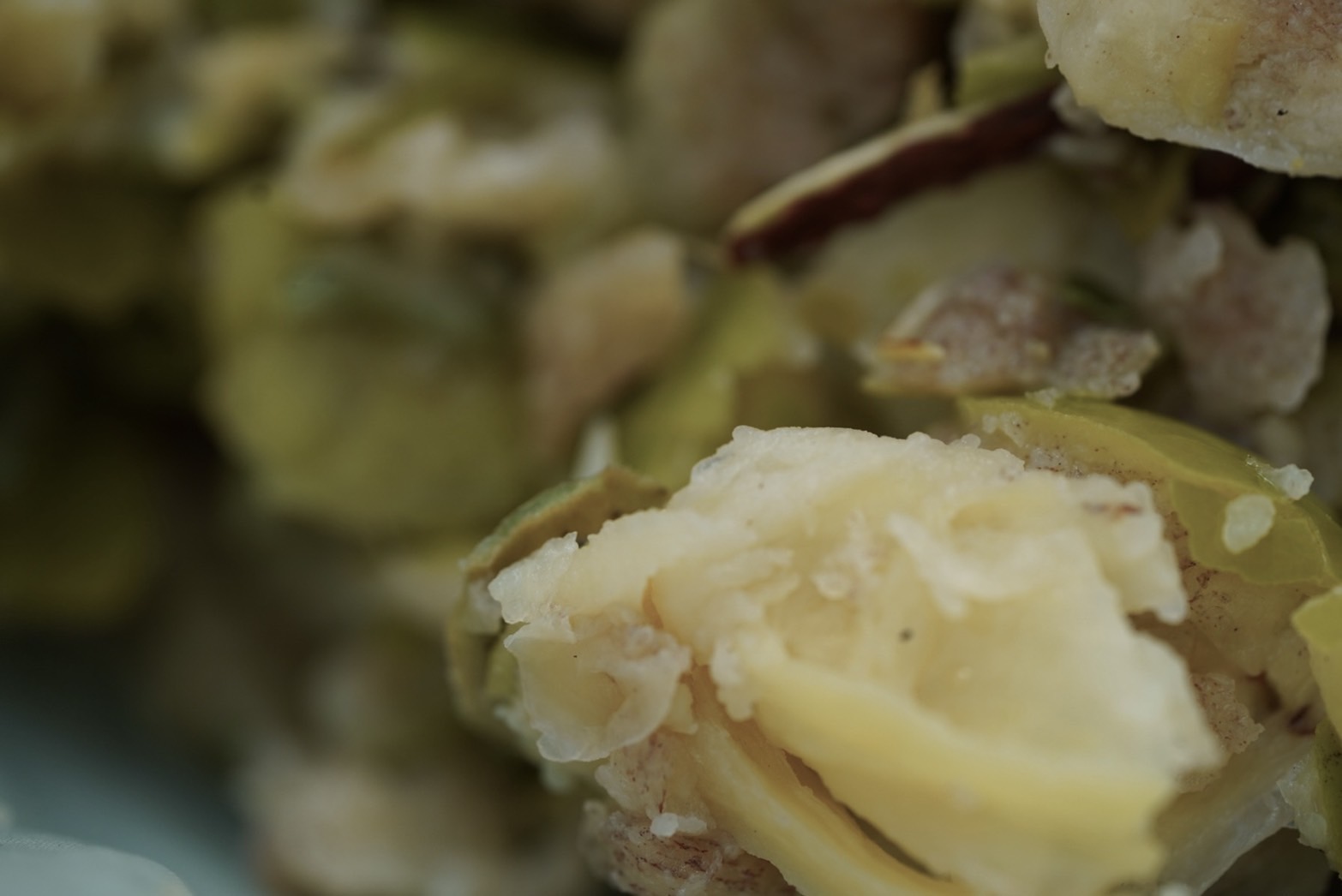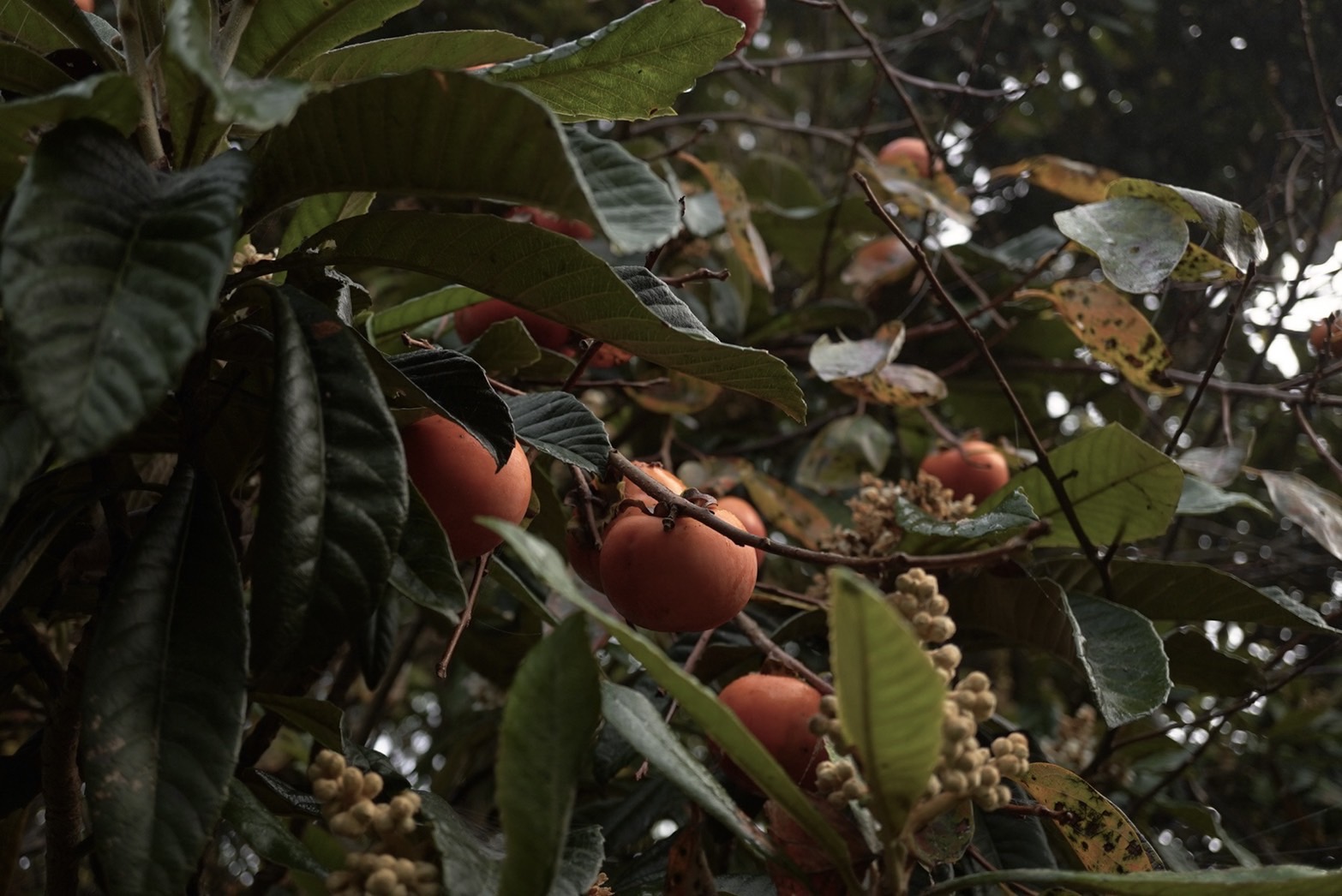The King of Wooden Confections

Ono Karori

The ears of rice are swaying, and the brilliant scenery is slowly taking on a rounder appearance.
The persimmons in the garden also appear green at first glance, but if you look closely you can see hints of yellow.
Until now, the persimmon trees would only catch my eye when they turned orange.
Yoshi, who is learning Aikido with me, is a dyer and taught me that you can harvest persimmon tannins from the persimmons in our garden, so around the time of the beginning of summer, I made persimmon tannins for the first time in my life.
Although I have had experience with clothing and items made with persimmon tannins, and had become interested in them while creating embroidery pieces, I had never actually handled or used persimmon tannins.

While working, Yoshi looked at the persimmons and muttered, "Maybe it's a little late..."
Persimmon tannins are made from green persimmons before they become sweet, when the flesh has formed and the seeds have not yet developed, and they are at their most energetic.
The persimmons are then pounded, crushed, soaked in water, and finally the astringency is extracted and the persimmons are fermented.
I was taught over two days, but since I knew nothing, I was still in a state of ignorance.
I realize that I have not paid any attention to, nor tried to learn anything about, the many persimmon trees in the garden.
Reading the book "Lacquer, Persimmon Tannins and Woodworking" by Miyamoto Tsuneichi that Yoshi lent me, the question of why my ancestors had planted persimmons in their gardens was answered, and at the same time I learned about the social background behind why persimmons, once known as the king of wooden sweets, were becoming unnecessary in everyday life.
Seeing so many persimmons in front of me, I decided I wanted to go against that trend and make persimmons one of our annual events.

Persimmons have always been one of the fruits that bring back fond memories.
It seems that unripe persimmons are more cold-resistant, and my mother's parents' house has a large unripe persimmon tree. Every year, they soak the stems of the persimmons in shochu and eat them when they have become sweet, as an autumn tradition.
The name "Shibuhachin" probably comes from the seedless "Hachichin persimmon," a specialty of Niigata.
Someone told me that if you soak it in shochu, the seeds will disappear, and I believed it, but I learned the shocking truth that there are no seeds in the first place.
I have now learned to keep mysteries beyond the Seven Wonders of Echigo to myself.
Unlike back home, it's nice to be able to pick and eat the sweet persimmons in the garden whenever you want, but you're satisfied with just a few, and then the fruit rots away for several years, leaving many fruits behind.
This year we are planning to invite Uja-nee (Yoyun-san) on October 10th and 11th to have a learning opportunity to make persimmon sweets.
I will announce the recruitment on my Instagram around the end of September, so if you're interested, don't miss it.

And this weekend, from the 18th, we will be holding our 6th anniversary event.
" Shota x Arisa Kawai Art Exhibition " is about to begin. Just keep staring at what is in front of you and encounter a unique view.
The joy of living and living to the fullest. Please come and experience the many aspects of "Tamakiharu."
Ono Kaori

